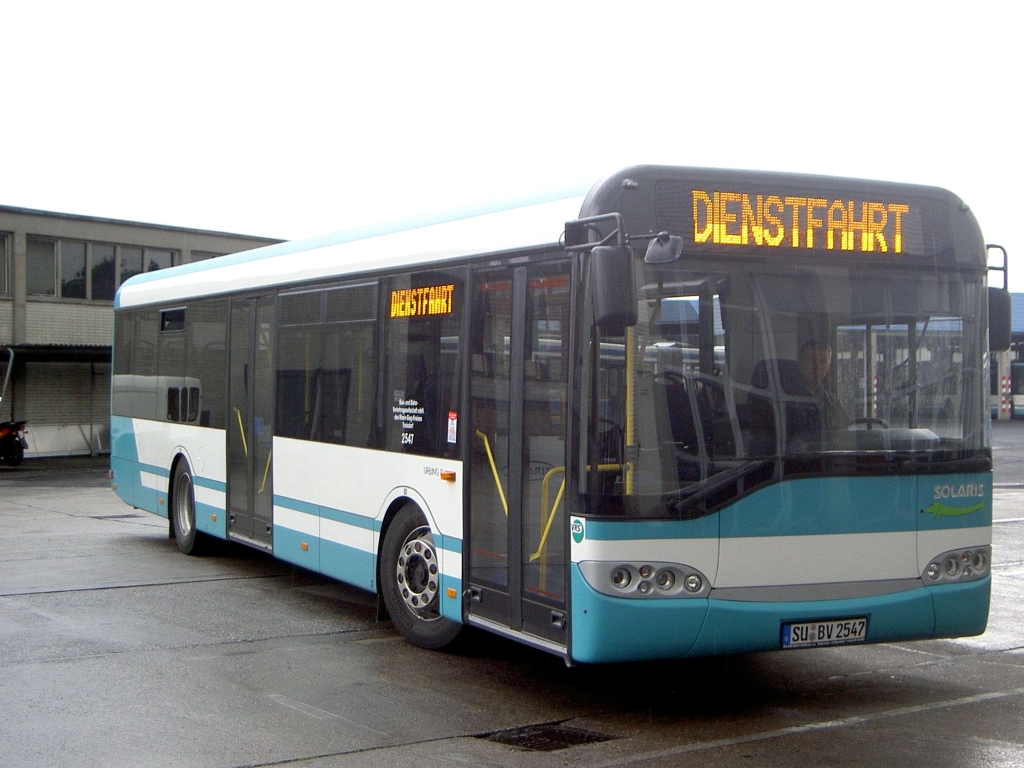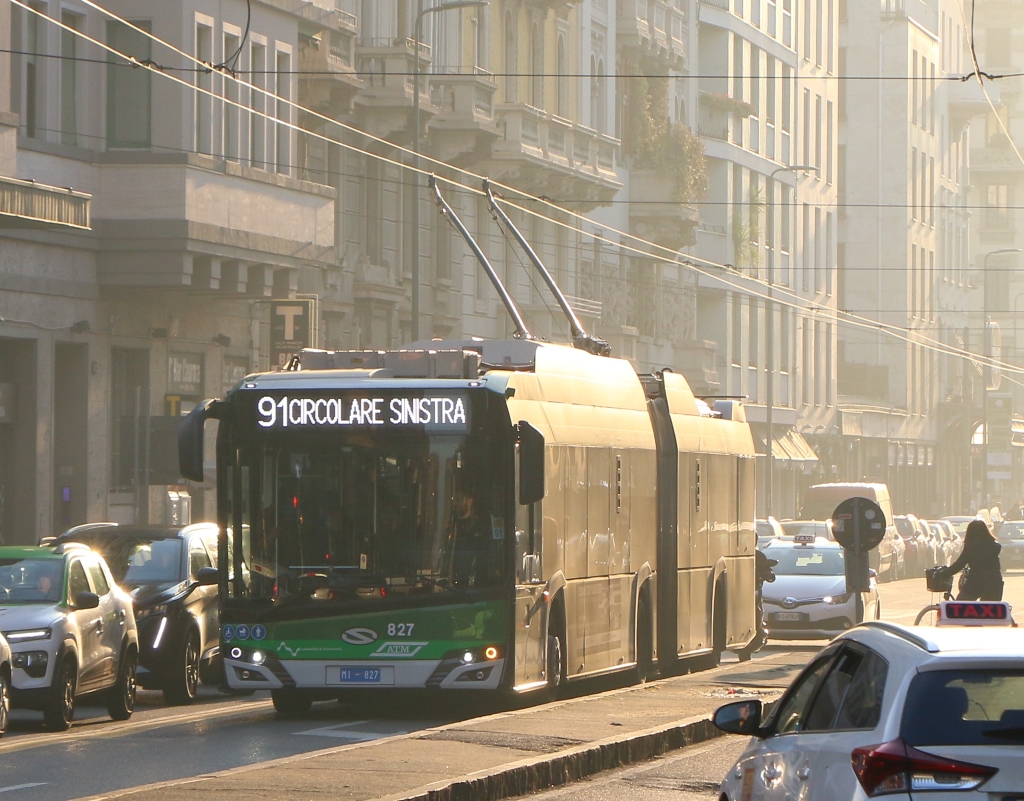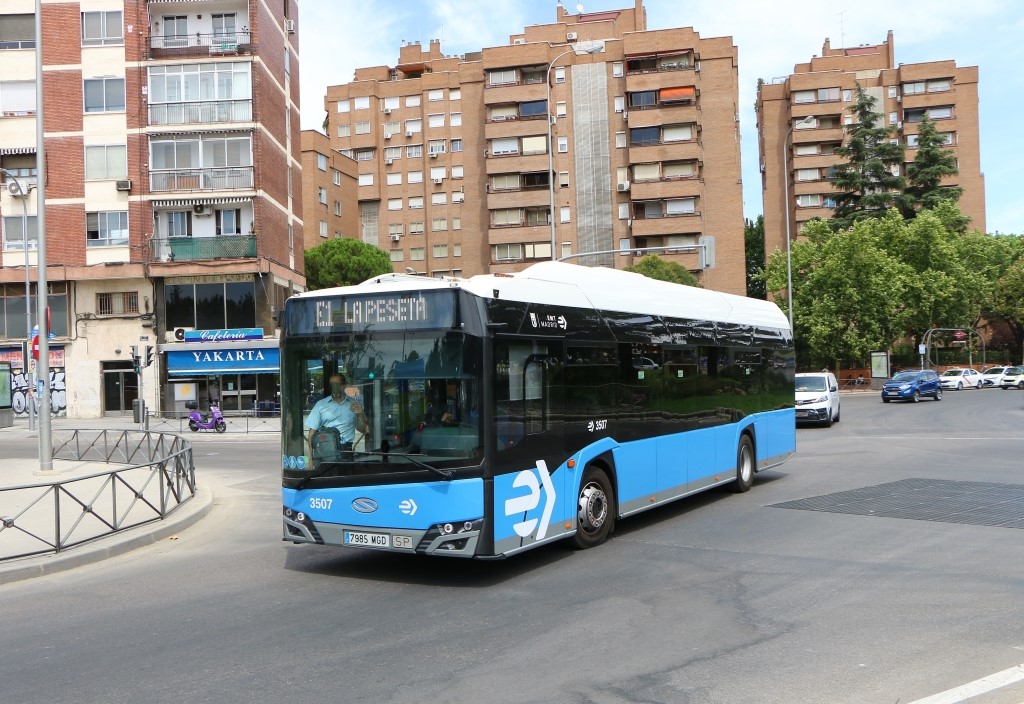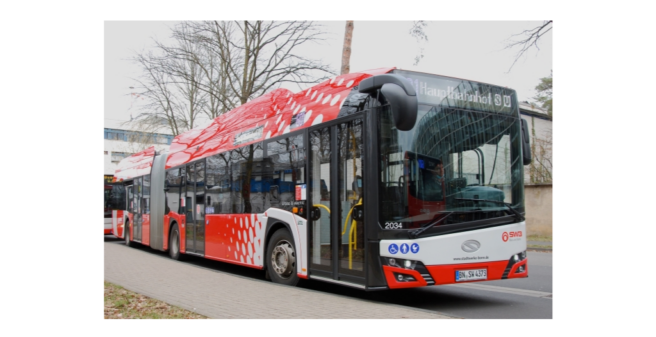
On 12 March 2024, Solaris reported on how the Polish/Spanish bus manufacturer fared in 2023 at its annual press conference on the state of business. The fact that this press conference was held online and not “on site” at the Solaris plant in Bolechowo remains from the coronavirus era. To anticipate this: CEO Javier Iriarte was very pleased.
He began by reporting that Solaris had not only maintained its position as the number one electric bus manufacturer in Europe in 2023 but had even been able to expand it. While the company had a market share of 14.5 % for electric buses (incl. trolleybuses and hydrogen buses) since 2012, it was able to increase this to 15.2 % in 2023. It is interesting to note that in the period from 2012, the Chinese manufacturer BYD followed in second place for electric buses, Mercedes in third place and MAN in sixth place. This order has changed quite a bit in 2023: last year, MAN was in second place, Mercedes remained in third place and BYD followed in fourth place. Solaris is the dominant market leader in Europe for the latter in particular: it is worth remembering that some Solaris trolleybuses are occasionally referred to as Skoda … Most recently, the Solaris Trollino 24 double-articulated battery trolleybuses for DPHMP Praha, which have just entered service.
In 2023, Solaris has built a total of 1,456 buses, which have been delivered to 17 countries around the world – Solaris buses are available in 33 countries in total. In its home country of Poland, Solaris is the undisputed market leader with a market share of around 50%, while the market in Italy is developing very strongly, with the Milan transport authority alone ordering well over 100 Solaris buses. Solaris is also increasingly gaining a foothold in Spain, the home country of the parent company CAF. Large orders have been delivered to Madrid and Barcelona, for example.
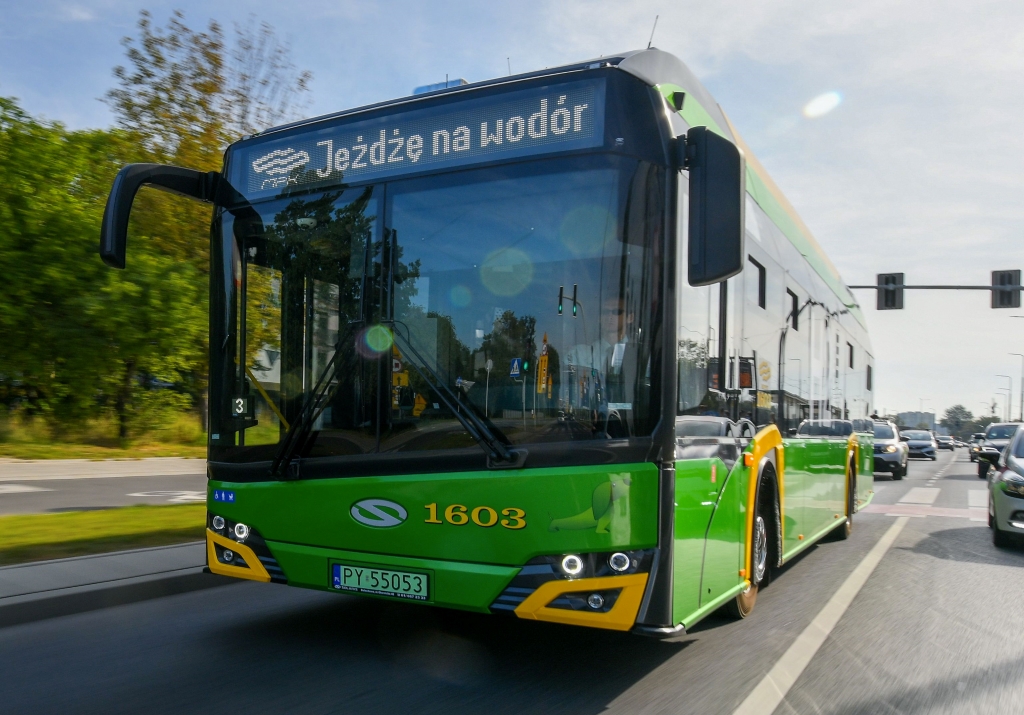
Talking about CAF: the CAF Group generates around 25 per cent of its commercial earnings with buses from its subsidiary Solaris.
In the meantime, 82 per cent of all Solaris buses are delivered with an alternative drive system. However, this does not only mean battery, hydrogen and trolley buses, but also those with a hybrid drive. The proportion of buses in Solaris’ output that are powered exclusively by a combustion engine, i.e. diesel or gas engines, is now only 18 per cent.
In 2018, “only” 29 per cent of all Solaris buses were delivered with an emission-free drive (i.e. electricity or hydrogen). By 2020, this figure had risen to 44 per cent, and by 2023, it was 55 per cent. This means that only 27 per cent of all newly registered buses now have a hybrid drive, and diesel-only buses are clearly on the decline. Its future is clearly behind it.
Last year, Solaris was able to increase its revenue by 18% to 819 million euros.
The main customer countries were Poland (of course), Spain, Italy, Norway, Germany (for a long time the second largest sales market for Solaris buses), the Czech Republic, Romania and Hungary. In 2023, Solaris delivered 690 battery buses, 202 trolleybuses and 81 hydrogen buses.
The proportion of hydrogen buses in particular shows that interest in this type of drive is growing. Solaris has a market share of 44.5% for this drive technology in Europe, making it the market leader here too. At the end of the year, the order books recorded orders for no fewer than 535 hydrogen buses to be delivered between 2024 and 2026. In order to meet this demand, Solaris has just built a new assembly hall on its factory premises in Bolechowo, which will be used exclusively for the construction of hydrogen and natural gas buses.
Deliveries
Solaris has received major orders from Germany from, among others:
- Berlin, BVG: 50 Solaris Urbino 18 electric, to be delivered in 2024 and 2025
- DVG Duisburg, 25 Solaris Urbino hydrogen, solo and articulated vehicles
- Essen, Ruhrbahn: 19 Urbino 12 hydrogen
- Frankfurt, In-der-City-Bus: 10 Urbino 12 hydrogen, due to arrive in Frankfurt these days
- Regionalverkehr Köln (RVK): 18 Solaris Urbino 18 hydrogen (articulated vehicles). Already the third order from RVK for hydrogen buses from Solaris
- rebus Regionalbus Rostock for 52 hydrogen buses, including 5 articulated vehicles. All are to be delivered this year.
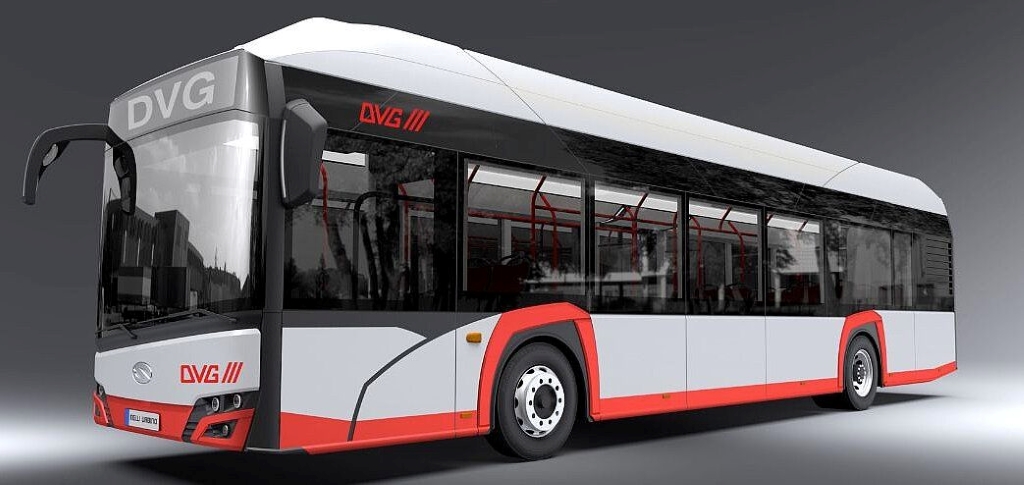
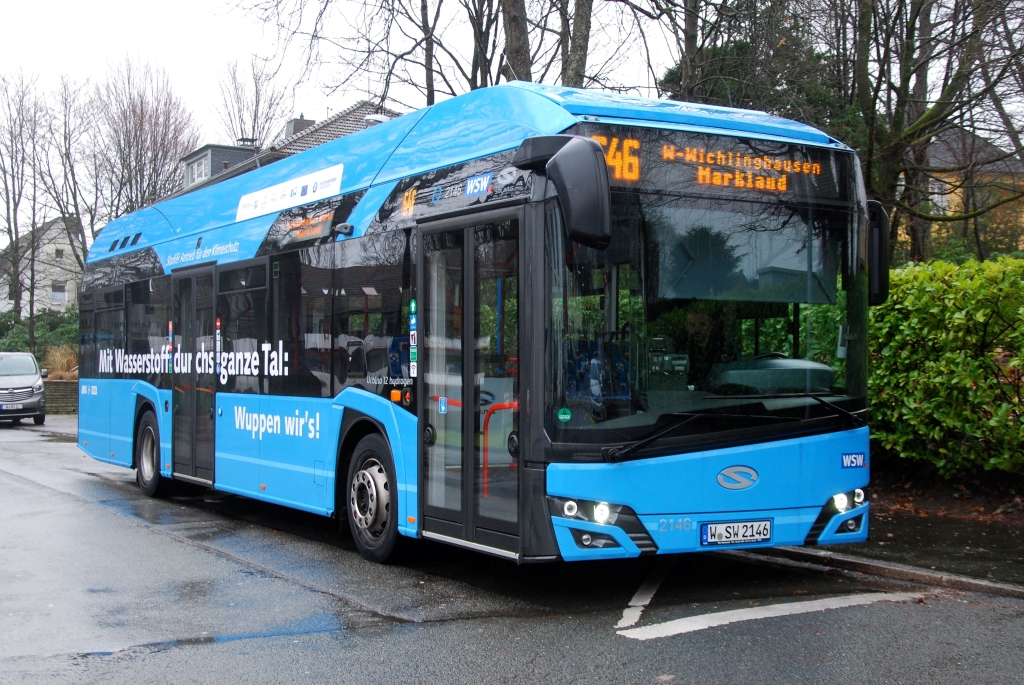
But Solaris is also very successful in the rest of Europe.
- In April, for example, 183 Solaris Urbino 18 electric buses were delivered to Oslo. This was the largest single order in the history of Solaris.
- TPER (Trasporti Publici Emilia Romagna) in Bologna, Italy, ordered 130 Solaris hydrogen buses. To date, this is the largest order for hydrogen buses that Solaris has received. The first vehicles are due to be delivered in 2024.
- 98 electric buses have been ordered for Cagliari in Sardinia
- The Azienda Veneziana della Mobilitá has ordered 90 hydrogen buses, which are to be delivered from November 2025.
- The Danish company Aarbus will receive 56 Urbino 18s in 2024 and 2025
- 40 hydrogen buses will go to TMB in Barcelona (Transports Metropolitans de Barcelona), to be delivered in 2024: 38 twelve-metre-long solo and two articulated vehicles.
And Solaris has just announced the award of further hydrogen bus contracts: 22 will go to Île-de-France Mobilité in the Greater Paris area and 5 to Mantua.
Technology
An improved version of the “Urbino 12 electric” battery-electric solo coach was launched on the market in 2023. Thanks to a new generation of batteries, it is intended to give the trolley a greater range so that it can complete an entire day’s service without recharging. The important thing is that the weight of the batteries has not increased. The batteries in the new “Urbino 12 electric” are located exclusively on the roof of the bus; the “motor tower” at the rear left of the vehicle has been removed, allowing additional seats to be installed. The new “Urbino 12 electric” celebrated its premiere at Busworld 2023 in Brussels and was also on display at the VDV’s electric bus conference, “mobility move”, in Berlin earlier this month.
Future corporate strategy
Solaris wants to maintain and expand its position as European market leader in the construction of zero-emission buses. To this end, an electric intercity bus is also to be launched on the market. And above all, Solaris wants to penetrate two new, large markets in the world: the USA and Canada.
To this end, the product range will, of course, be continuously developed in the future and adapted to the needs of the markets. Solaris emphasises that it offers a complete range of zero-emission buses for public transport. This consists of ten types of battery-electric buses, hydrogen buses and trolleybuses. This is flanked by different types of batteries, which the customer can choose from, and recharging systems according to customer requirements.
